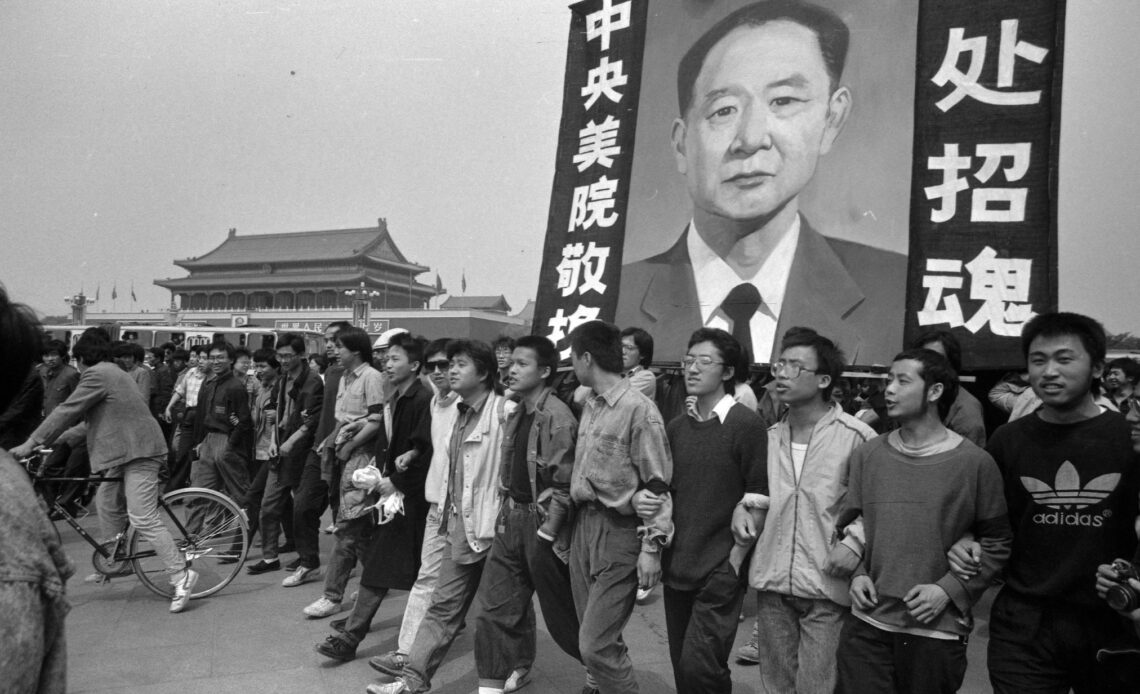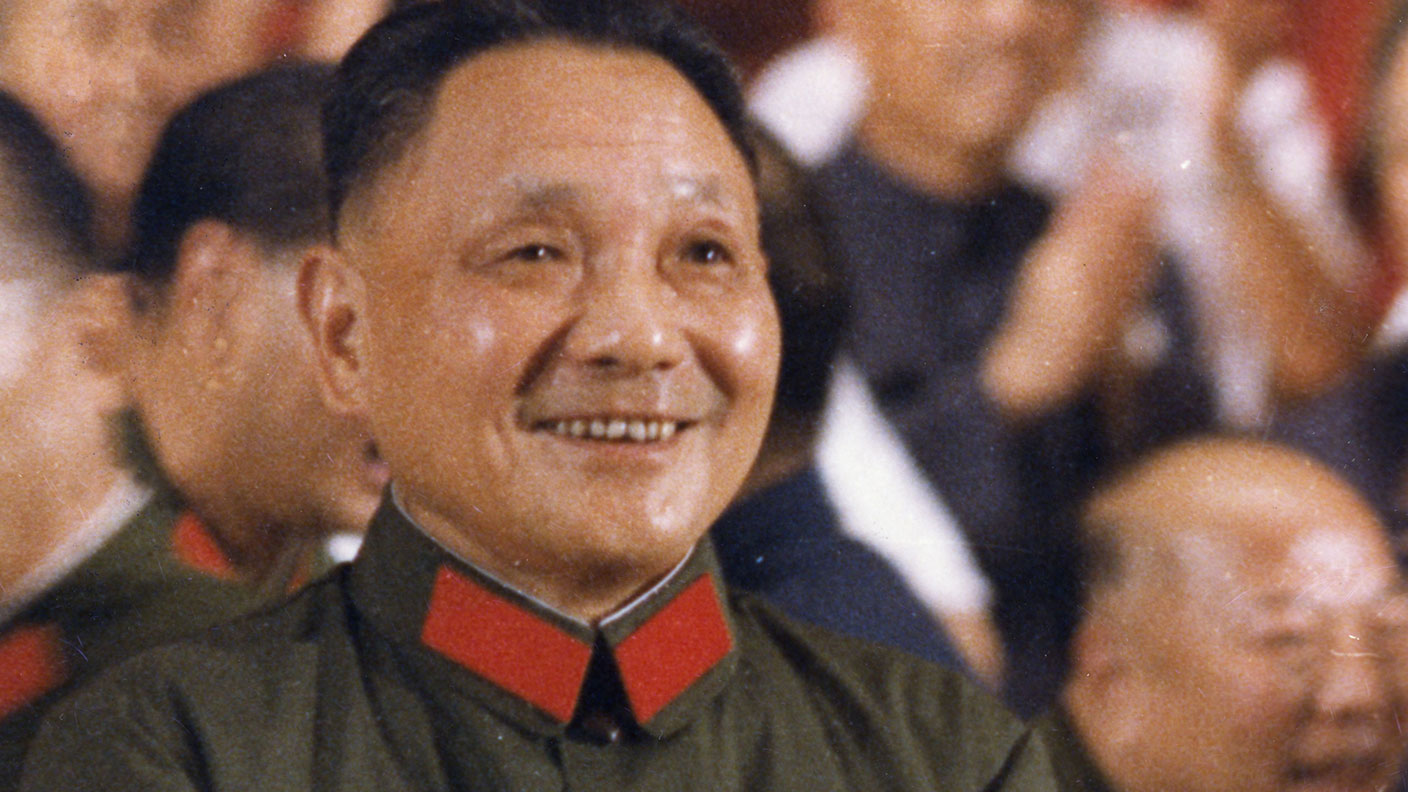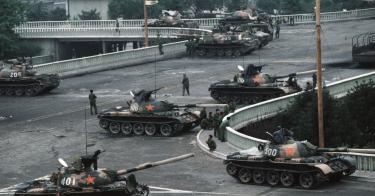
June 4, 1989. The DARKEST spot in the already Dark history of China. A day when thousands were massacred for demanding something which everyone reading this thinks as a basic necessity. Yes I am talking about the TIANANMEN SQUARE MASSACRE. A chapter China has always tried to suppress will full might. Not just books, but even the state-controlled press and internet have no reference to this episode. So, if someone is born in China, it is actually impossible that he will ever be even able to know about this. But, since fortunately we haven’t let me unravel the whole episode of the massacre at the Heart of China.
Also Read: Know about the earlier history of China in my old Article
The Backdrop of the Story
Tiananmen Square is considered the heart of China. It is the place where Chinese leader Mao Zedong established the People’s Republic of China (PRC) by unfurling the Red flag.
Mao had started the Cultural Revolution, which although had its own share of benefits, but at the same time also had a heavy negative impact on the country. It actually destroyed the whole social and economic fabric of the country. The Communist ideology was imposed upon the public, all dissenting voices were crushed and people were massacred. And contrary to what was targeted, it resulted in an increase in poverty, the economy came to a halt and the country was mired in famine during the 1960s. If we talk about Mao’s regime, it will require a separate article. Finally, with Mao’s death in 1976, the Cultural Revolution ended, but China’s bad fortune didn’t.
The reigns were taken by Deng Xiaoping in 1978. He seemed quite the opposite of Mao in terms of policies. Instead of ‘ideological purity’, he laid the focus on material prosperity. By 1981, he had de-collectivized around 73% of rural farms and 80% of state-owned enterprises were allowed to retain profits. This resulted in a rapid rise in production rising rapidly and a reduction in poverty.

Pic: Former Chinese President Deng Xiaoping
Demand of Democracy
Now, although the policies did bring economic growth, there was also a flip side as well. Firstly, the policies led to too much corruption and nepotism leading to shortage of jobs for the youth. The job crisis along with rising inflation caused heavy unrest and anger among the public, especially the youth.
More than just policies, slowly the public was getting fed up with the whole COmmunist ideology itself. After looking at Mao’s dictatorial regime followed by Deng also failing on many fronts, the public was of the opinion that they should adopt a new ideology. Although they didn’t have much idea about what exactly is Democracy, they thought that it is time to vow that.

Pic: Students gathered at the Tiananmen Square
The Seeds of Rebellion
Here, enters the character of Fang Lizhi, an astrophysics professor who returned from Princeton University. He started visiting universities and meeting students to know their concerns. He started propagating about liberty, human rights and separation of powers. The students too started resonating with Fang’s thoughts and the demand for Democracy started growing further. The noise also reached the powerholders. Deng said that Fang is misguiding the public and is worshipping western ideals by cornering the Chinese traditional values. But, the spark was already ignited.
Another big incident occurred when the General Secretary of the Communist Party Hu Yaobang started supporting the protestors and calling their demands genuine. But the Communist Party was rigid in its stand. The party humiliated Yaobang and forced him to resign. It led to his death due to a heart attack. This further ignited the protests, Slowly, posters demanding democracy and mourning Hu started coming up.
Also Read: My comprehensive Article on Russia’s attack on Ukraine
The Student FORCE
Around 3000 and 1000 students from Peking University and Tsinghua University respectively erected Hu’s shrines and started marching in a piecemeal fashion towards Tiananmen Square. By 1986 only, the students inspired by Fang and other people-power movements started gathering at Tiananmen Square. Protests demanding liberalization, press freedom and democracy started with full vigour. The protest started on April 16 1989, and in a matter of 3-4 days, it started becoming a headache for the government. On April 23, the protestors officially formed the ‘Beijing Students Autonomous Federation‘ also known as ‘The Union‘.
Despite all this, there was one faction in the party that still wanted to at least listen and have a discussion with the protestors, such as Zhao Ziyang. But the hardliners were just like always larger in numbers. The moderate faction under Zhao and the conservative faction under Li Peng actually clashed at the PSC meeting. So, everything depended on their leader Deng’s choice and he, as expected, supported Peng and actually called people like Hu and Zhao “traitors” and he was mistaken in choosing them as his successors.

Pic: Students and Army face off at Tiananmen Square
Imposition of Marital Law
Here, the newspaper People’s Daily wrote an editorial that those protesting against the protestors called them “anti-nationals”. This turned out to be the last nail in the coffin…for the government. It led to 50,000-1,00,000 students from all universities in Beijing gathering at Tiananmen Square. The students also began a hunger strike on May 13, just two days before the Russian Premiere Mikhail Gorbachev (last President of the USSR) was to visit China. Beyond expected lines, the protests now started getting international recognition and sympathy.
Deng was left worried and tense. Finally, he called out a meeting at Zhongnanhai. Here, Deng said that he has had enough and now he is ready to take the route of ‘martial law’. Finally, martial law was imposed on May 20 and the army too reached Tiananmen Square demanding the area to be cleared. But, the result was not as spontaneous as Deng had expected. The students didn’t panic at all. They started talking with the soldiers as well and telling them their concerns and the real demand of their protest. And, surprisingly some of the soldiers too started agreeing with the students.

Pic: Tanks at the Tiananmen Square
June 4, 1986: The Night of the Horror
But, the end was not going to be that nice. Finally, on June 4, the horror night finally occurred. The state-run television channels were repeatedly warning the protestor to not come out, but the protestors had already decided to dedicate their life to Democracy, and they stood there. As a result, on June 4 at 10 pm the army finally opened fire killing many protesters. It further worsened the situation, and once the violence erupted, it also infuriated the locals. The locals attacked the army with stones and sticks and also set the military vehicles on fire. Now, the army adopted an even more serious route.
They brought tanks and aircraft and opened fire even more intensively. Tanks were run over the peaceful protestors carrying no weapons. The whole demand for Democracy was CRUSHED down with more than 10,000 protestors mainly students being brutally killed. Though, the shameful government only claims 300 deaths in the attack and that too it says happened because of the military acting in “self-defence”. President Deng also addressed the public on July 9 and condoled the death of soldiers, but not a word came out of his mouth for the protestors. In this way, the demand for Democracy was CRUSHED through a MASSACRE.

Pic: The ‘Tower of Shame’ in Hong Kong
And the Revolution was CRUSHED
So, this was the story of a brave revolution being crushed by brute force. The students, the youth tried their very best but there is a limit to which one can fight. That was the closest China ever went to a Democracy and since then it kept on stooping further down the level of dictatorship. If that was not enough, it also overwhelmingly participated in military expansion and crushing democracies in other countries like Hong Kong and Tibet. There is absolutely no source in China had even mentioned this episode. No books, no recording and it’s even erased from the state-controlled internet there. If you are Chinese (which me being fine implies you’re not), then there is absolutely no chance you will ever come to know about this episode.
No social media at that time and the press being under state control meant that the world didn’t actually get the extent of the massacre. In its efforts to erase the episode, China even removed the Tower of Shame which represents the Tiananmen Square massacre from Hong Kong. But, despite how much China craves for erasing it, this episode should and will be discussed. I hope that something like this never ever takes place again. At last, I remember all those massacred in the pro-democracy protests at Tiananmen Square.


Once again a wonderfully researched article 🥳